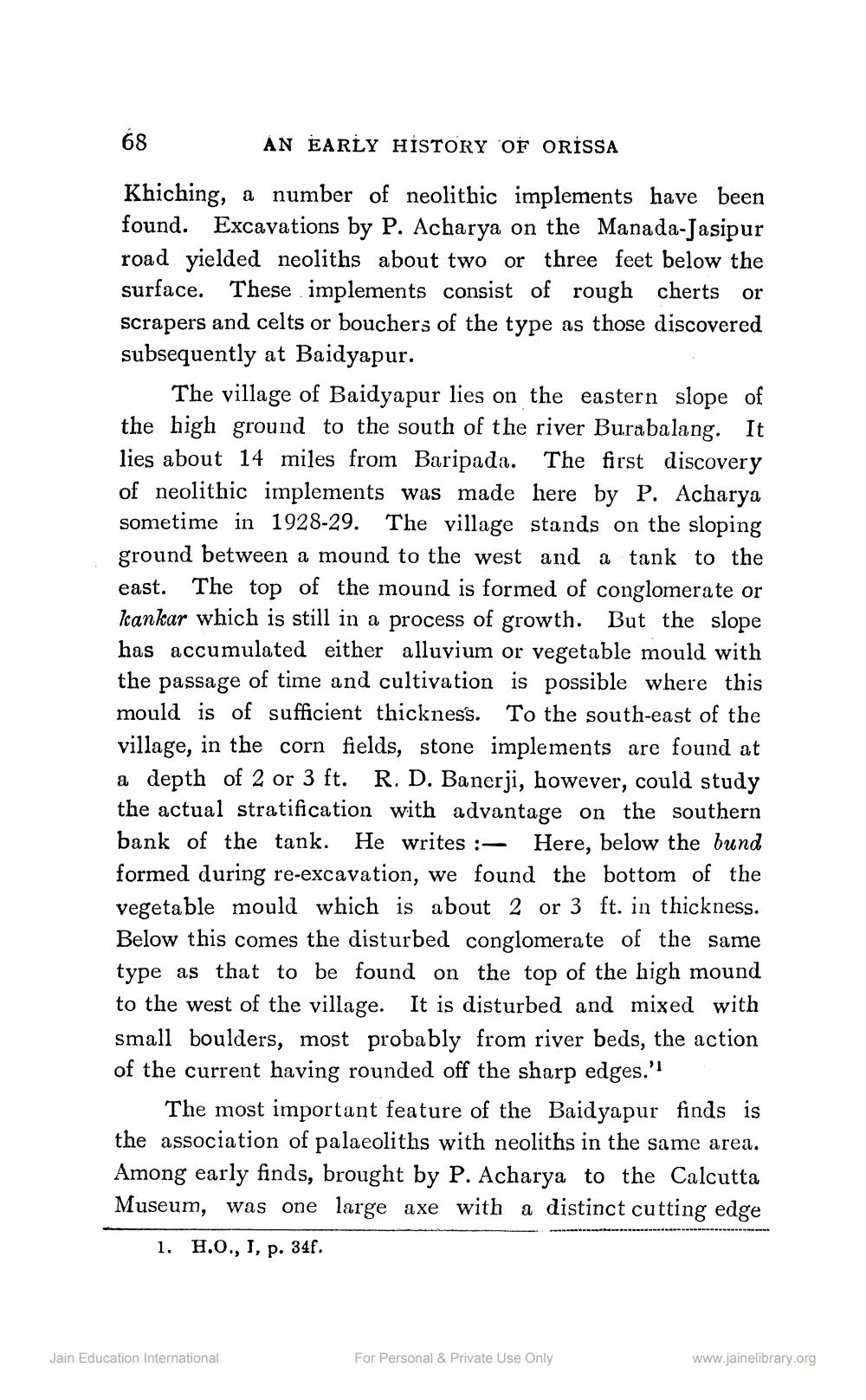________________
68
AN EARLY HISTORY OF ORISSA
Khiching, a number of neolithic implements have been found. Excavations by P. Acharya on the Manada-Jasipur road yielded neoliths about two or three feet below the surface. These implements consist of rough cherts or scrapers and celts or bouchers of the type as those discovered subsequently at Baidyapur.
The village of Baidyapur lies on the eastern slope of the high ground to the south of the river Burabalang. It lies about 14 miles from Baripada. The first discovery of neolithic implements was made here by P. Acharya sometime in 1928-29. The village stands on the sloping ground between a mound to the west and a tank to the east. The top of the mound is formed of conglomerate or kankar which is still in a process of growth. But the slope has accumulated either alluvium or vegetable mould with the passage of time and cultivation is possible where this mould is of sufficient thickness. To the south-east of the village, in the corn fields, stone implements are found at a depth of 2 or 3 ft. R. D. Banerji, however, could study the actual stratification with advantage on the southern bank of the tank. He writes :- Here, below the bund formed during re-excavation, we found the bottom of the vegetable mould which is about 2 or 3 ft. in thickness. Below this comes the disturbed conglomerate of the same type as that to be found on the top of the high mound to the west of the village. It is disturbed and mixed with small boulders, most probably from river beds, the action of the current having rounded off the sharp edges.''
The most important feature of the Baidyapur finds is the association of palaeoliths with neoliths in the same area. Among early finds, brought by P. Acharya to the Calcutta Museum, was one large axe with a distinct cutting edge
1. H.O., I, p. 34f.
Jain Education International
For Personal & Private Use Only
www.jainelibrary.org




